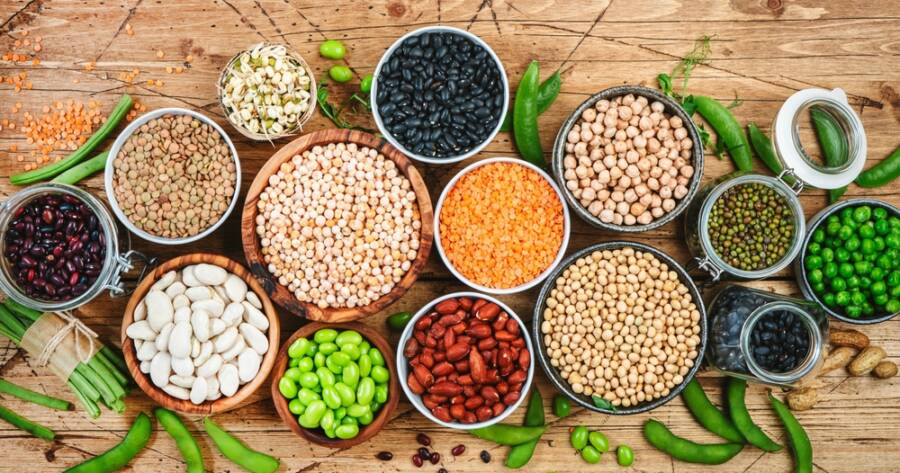Getting enough protein doesn’t have to mean spending a fortune on steak or supplements. Whether you eat meat, plant-based foods, or somewhere in between, there are plenty of affordable ways to meet your protein needs while keeping meals healthy and satisfying. Protein is essential for building muscle, maintaining energy, and supporting overall health—and it’s easier than you might think to get enough on a budget. Understand some of the best low-cost protein sources for any diet or lifestyle.
1. Eggs: The Classic, Versatile Option
Eggs are one of the most nutritious and affordable protein sources available. A single egg provides about six grams of high-quality protein along with essential vitamins and minerals like vitamin D, B12, and choline. They’re also incredibly versatile—you can boil, scramble, fry, or bake them into countless dishes.
Because eggs cook quickly, they’re perfect for busy mornings or last-minute meals. Try adding them to salads, sandwiches, or rice bowls for a protein boost. If you have leftovers, hard-boiled eggs make excellent grab-and-go snacks.
For those who prefer plant-based alternatives, tofu can play a similar role in versatility and meal prep. Like eggs, it adapts easily to different flavors and cooking styles, making it a great protein swap in both savory and sweet recipes.
2. Beans and Lentils: Plant-Based Powerhouses
Beans and lentils are nutritional all-stars that provide protein, fiber, and important minerals like iron and magnesium. They’re not just healthy—they’re also one of the most cost-effective sources of protein available.
Black beans, chickpeas, kidney beans, and lentils can be added to soups, salads, tacos, or stir-fries to bulk up meals without adding much cost. You can even use them to replace or stretch meat in recipes like chili or pasta sauce. For example, combining ground turkey with black beans makes a meal just as filling while doubling the servings.
Lentils, in particular, cook quickly and don’t require soaking, which makes them a convenient option for weeknight meals. They work beautifully in curries, soups, and veggie burgers, providing long-lasting energy and rich flavor.
3. Canned Fish: Shelf-Stable and Protein-Rich
Canned fish such as tuna, salmon, or sardines is another excellent protein source that doesn’t break the bank. It’s shelf-stable, easy to store, and can be used in everything from sandwiches to pasta to salads.
Tuna and salmon provide omega-3 fatty acids, which support heart and brain health. Sardines are also rich in calcium and vitamin D, making them particularly nutritious. Because canned fish is pre-cooked, it’s great for quick meals or snacks when you don’t have time to cook.
Try mixing canned tuna or salmon with Greek yogurt, mustard, or lemon juice for a healthier version of tuna salad. You can also toss it into cooked pasta with vegetables for a balanced, protein-packed meal.
For vegetarians or vegans, canned beans or lentils can serve a similar role as a shelf-stable, nutrient-dense pantry staple.
4. Chicken and Turkey: Lean and Adaptable
When it comes to animal protein, chicken and turkey offer some of the best nutritional value for the cost. Both are lean, high in protein, and can be prepared in endless ways.
Chicken thighs, drumsticks, and ground turkey tend to be more affordable than premium cuts but are just as flavorful when cooked properly. Use them in soups, stir-fries, casseroles, or sandwiches. Cooking in bulk—like roasting a whole chicken—also provides leftovers that can be turned into salads, wraps, or soups throughout the week.
If you follow a pescatarian or vegetarian diet, consider soy-based proteins such as tempeh or seitan. These options provide a similar texture and protein content while remaining budget-friendly, especially when purchased in bulk or made at home.
5. Greek Yogurt and Cottage Cheese: High-Protein Dairy Staples
Dairy products like Greek yogurt and cottage cheese are excellent sources of protein that fit into most diets. They’re not only versatile but also packed with nutrients such as calcium and probiotics for gut health.
Greek yogurt contains roughly twice the protein of regular yogurt and can be used in both sweet and savory dishes. Mix it with fruit for breakfast, use it as a base for smoothies, or swap it for sour cream in recipes. Cottage cheese, meanwhile, makes a filling snack on its own or combined with fruit, nuts, or whole-grain crackers.
For lactose-intolerant individuals, many brands now offer lactose-free or plant-based alternatives made from soy, almond, or coconut milk. These can still provide protein while accommodating dietary restrictions.
6. Whole Grains and Nuts: Supporting Players with Staying Power
While grains and nuts aren’t as protein-dense as meats or legumes, they still make valuable contributions to a balanced diet. Whole grains like quinoa, oats, and brown rice contain more protein than their refined counterparts and complement other protein sources beautifully.
Nuts and seeds—like almonds, peanuts, and sunflower seeds—are also excellent for snacking or adding texture to meals. A sprinkle of nuts over oatmeal or a spoonful of peanut butter on toast can easily boost your protein intake while adding flavor and healthy fats.
Protein Made Simple and Affordable
Eating enough protein doesn’t require fancy ingredients or expensive supplements. From eggs and beans to yogurt and canned fish, affordable protein sources are easy to find and even easier to enjoy.
The key is variety—mixing plant and animal proteins ensures you get a full range of nutrients while keeping meals interesting and budget-friendly. By focusing on these simple, accessible options, you can fuel your body, stretch your grocery budget, and enjoy delicious, protein-packed meals every day.

